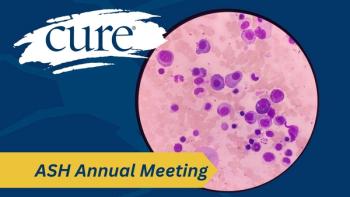
Not All Healing Comes in the Shape of a Pill
The American Society of Clinical Oncology issued guidelines in 2017 to support the use of meditation, yoga, acupuncture and music therapy among to help relieve side effects from cancer treatment.
I was beyond excited this week to read news that more is being done to validate and support integrative oncology guidelines for breast cancer patients. The American Society of Clinical Oncology (ASCO) issued guidelines in 2017 to support the use of meditation, yoga, acupuncture and music therapy among other modalities to be safety used to help relieve side effects from treatments. Some of the side effects they are finding benefit for include nausea, anxiety, depression, fatigue, quality of life and chemotherapy-induced peripheral neuropathy (CIPN).
I became a yoga teacher in 2015 while healing from breast cancer, and I have written about my own personal experience using yoga and meditation to heal. I did not use acupuncture, but I have also written about the importance of music to promote healing among other topics. This is all great news and, of course, it is expected that benefits for stress, anxiety and depression can all be amplified with the support of cognitive behavioral therapy and other traditional modalities.
Finding complementary therapies and support are encouraging, as sometimes there is not a medication to address all of the side effects a person might face. Or, if a person does add a new medication to a long regimen, that medication for a side effect may have its own side effect. I find it encouraging that we are in a day and age where we can explore the benefits of integrative therapies along with pharmaceutical advancements and traditional therapies.
I believe that we are opening the door to discussing this polarizing subject. This does not mean we should rely solely upon complementary therapies, but it might also be best to consider therapies and treatments in addition to traditional pharmaceutical guidelines. When I was in graduate school, I trained at a teaching hospital and from my experience in this setting, it takes those who have been in the field to sometimes be open-minded to having a new dialogue with patients which might go beyond their comfort zone. I was once asked to tell a patient they would likely never walk again. I found being a young 20-something female intern back then that I had to be direct. It worked, and helped the doctor and patient.
Having worked in the area of spinal cord injuries, I saw treatments and approaches changing in this field. The use of biofeedback is one example. I used this to help train a former patient to use his hands after a spinal cord injury, with the goal of operating a motorized wheelchair. He was probably told this would never happen, as years ago this was not a standard or commonly used modality at the time. I proudly helped him meet this goal as he successfully learned to retrain the signal from his brain to his hands with the help of biofeedback equipment. Maybe we need to learn not to limit our thinking, and realize that we have yet to find all the medications or treatments that can make a difference.
I hope the ASCO guidelines help with dialogue between patients and their health care providers. I am encouraged by clinical trials which are paving the way for us to think about healing that can occur apart from taking a pill. I do encourage individuals to look for providers who have proper training, certifications and experience or supervision in the modalities being mentioned.
If you would like to learn more about the topic you can read about it with the Journal of Clinical Oncology entitled. “Integrative Therapies During and After Breast Cancer Treatment: ASCO Endorsement of the SIO Clinical Practice Guideline.” Additional information is also available at www.asco.org/supportive-care-guidelines.





